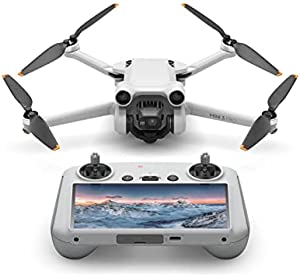Are you looking for an unforgettable travel experience in Europe? Look no further than a journey along the picturesque Danube River to Vienna, Austria. This city offers stunning architecture, rich history, and a vibrant culture that will leave you breathless.
In this article, we’ll cover everything you need to know about traveling to Vienna, including:
- Introduction to Vienna
- The Danube River: A Natural Beauty
- Top Attractions in Vienna
- Exploring Vienna’s Art Scene
- Viennese Cuisine: A Foodie's Delight
- Accommodations in Vienna
- Transportation in Vienna
- Safety Tips for Traveling to Vienna
- Best Time to Visit Vienna
- Conclusion: Why You Should Visit Vienna
1. Introduction to Vienna
Vienna is the capital and largest city in Austria. It is located in the eastern part of the country and is renowned for its stunning architecture, art museums, and coffeehouse culture. Visitors can stroll through the city's historic streets, take in the grandeur of the Schönbrunn Palace, or attend performances at the famous Vienna State Opera.
2. The Danube River: A Natural Beauty
The Danube River is one of Europe's most iconic rivers and flows through ten countries, including Austria. Taking a cruise down the Danube River is an excellent way to see the beautiful countryside and stop in charming towns along the way. Some of the highlights of the Danube River include:
- Wachau Valley: This region is a UNESCO World Heritage Site and is known for its picturesque vineyards, medieval castles, and charming villages.
- Melk Abbey: This Benedictine abbey dates back to the 11th century and is a masterpiece of Baroque architecture.
- Bratislava: The capital of Slovakia is a charming city with a rich history and beautiful architecture.
3. Top Attractions in Vienna
Vienna is home to many world-renowned attractions that are not to be missed. Here are just a few:
- Schönbrunn Palace: This baroque palace was the summer residence of the Habsburgs and is one of Europe's most impressive royal palaces.
- St. Stephen's Cathedral: This Roman Catholic cathedral is over 700 years old and is an iconic landmark in Vienna.
- Hofburg Palace: This massive imperial palace was the residence of the Habsburgs for over six centuries and now houses several museums.
- Belvedere Palace: This stunning palace complex features beautiful gardens and houses a collection of Austrian art, including Gustav Klimt's famous painting "The Kiss."
4. Exploring Vienna’s Art Scene
Vienna is home to some of the world's greatest artists and art museums. Here are a few places you should check out:
- Kunsthistorisches Museum: This museum houses an extensive collection of art from ancient Egypt, Greece, and Rome, as well as European paintings from the Middle Ages to the modern era.
- Albertina Museum: This museum is home to one of the world's largest graphic art collections and also features paintings by Monet, Picasso, and other notable artists.
- Museum of Applied Arts: This museum showcases contemporary design and applied arts from around the world.
5. Viennese Cuisine: A Foodie's Delight
Vienna is renowned for its culinary delights, which include both traditional dishes and modern cuisine. Some popular Viennese dishes include:
- Wiener Schnitzel: This classic dish is made from breaded and fried veal cutlets and is served with lingonberry jam and a side of potato salad.
- Tafelspitz: This is a boiled beef dish served with horseradish and apple sauce.
- Sachertorte: This chocolate cake is a Viennese specialty and is made with layers of chocolate sponge cake, apricot jam, and dark chocolate icing.
6. Accommodations in Vienna
Vienna has many accommodation options ranging from budget-friendly hostels to luxurious hotels. Some popular choices include:
- Hotel Sacher: This luxury hotel is located in the heart of Vienna and is famous for its Sachertorte dessert.
- Palais Coburg Residenz: This five-star hotel is set in a historic palace and features elegant rooms and gourmet dining.
- Wombats Hostel: This budget-friendly hostel is located near the city center and offers both private and shared rooms.
7. Transportation in Vienna
Vienna has an extensive public transportation system that includes buses, trams, and subways. The easiest and most convenient way to get around the city is by purchasing a Vienna City Card or a Vienna Pass, which offer unlimited use of public transportation and discounts on attractions.
8. Safety Tips for Travelingto Vienna
Vienna is generally a safe city, but like any other urban area, travelers should take precautions to ensure their safety. Here are some tips to keep in mind:
- Be aware of your surroundings and keep an eye on your belongings, especially in crowded areas.
- Avoid walking alone at night, particularly in poorly lit areas.
- Keep your valuables hidden or locked in a safe while in your hotel room.
- Use ATMs located indoors or in well-lit areas.
9. Best Time to Visit Vienna
Vienna is a year-round destination, with something to offer visitors no matter what time of year they visit. The best time to visit depends on your preferences and interests.
- Spring: March to May is a great time to visit Vienna if you want to see the city's beautiful gardens and parks in bloom. The weather is mild, and there are fewer crowds than during the summer months.
- Summer: June to August is peak tourist season in Vienna, with pleasant weather and a bustling atmosphere. It's a great time to take advantage of outdoor events and festivals.
- Fall: September to November is another great time to visit Vienna, as the crowds thin out, and the city's cultural calendar is in full swing. The weather is cool but comfortable.
- Winter: December to February is the winter season in Vienna, and it can be quite cold. However, the holiday season is magical, with Christmas markets and festive lights lining the streets.
10. Conclusion: Why You Should Visit Vienna
In conclusion, Vienna is a must-visit destination for anyone traveling to Europe. With its stunning architecture, rich history, vibrant culture, and culinary delights, it offers something for every type of traveler. Whether you're interested in exploring art museums, strolling through historic streets, or cruising down the Danube River, Vienna has it all. So pack your bags and get ready for an unforgettable journey to one of Europe's most beautiful cities.
FAQs About Traveling to Vienna
- Is Vienna an expensive city to visit?
Vienna can be quite expensive, especially when it comes to accommodation and dining. However, there are ways to save money, such as staying in hostels or budget hotels and eating at local cafes or street food vendors.
- Do I need a visa to travel to Vienna?
Most visitors from the United States, Canada, and the European Union do not need a visa to enter Austria for stays of up to 90 days. However, travelers should check the visa requirements for their specific country before booking their trip.
- What is the best way to get around Vienna?
Vienna has an excellent public transportation system that includes buses, trams, and subways. The easiest and most convenient way to get around the city is by purchasing a Vienna City Card or a Vienna Pass, which offer unlimited use of public transportation and discounts on attractions.
- What language is spoken in Vienna?
The official language of Vienna is German, but English is widely spoken and understood, particularly in tourist areas.
- What are some lesser-known attractions in Vienna to check out?
Some lesser-known attractions in Vienna include the Hundertwasserhaus, a colorful and quirky apartment building designed by artist Friedensreich Hundertwasser, and the Naschmarkt, a bustling outdoor market that sells everything from fresh produce to souvenirs.


